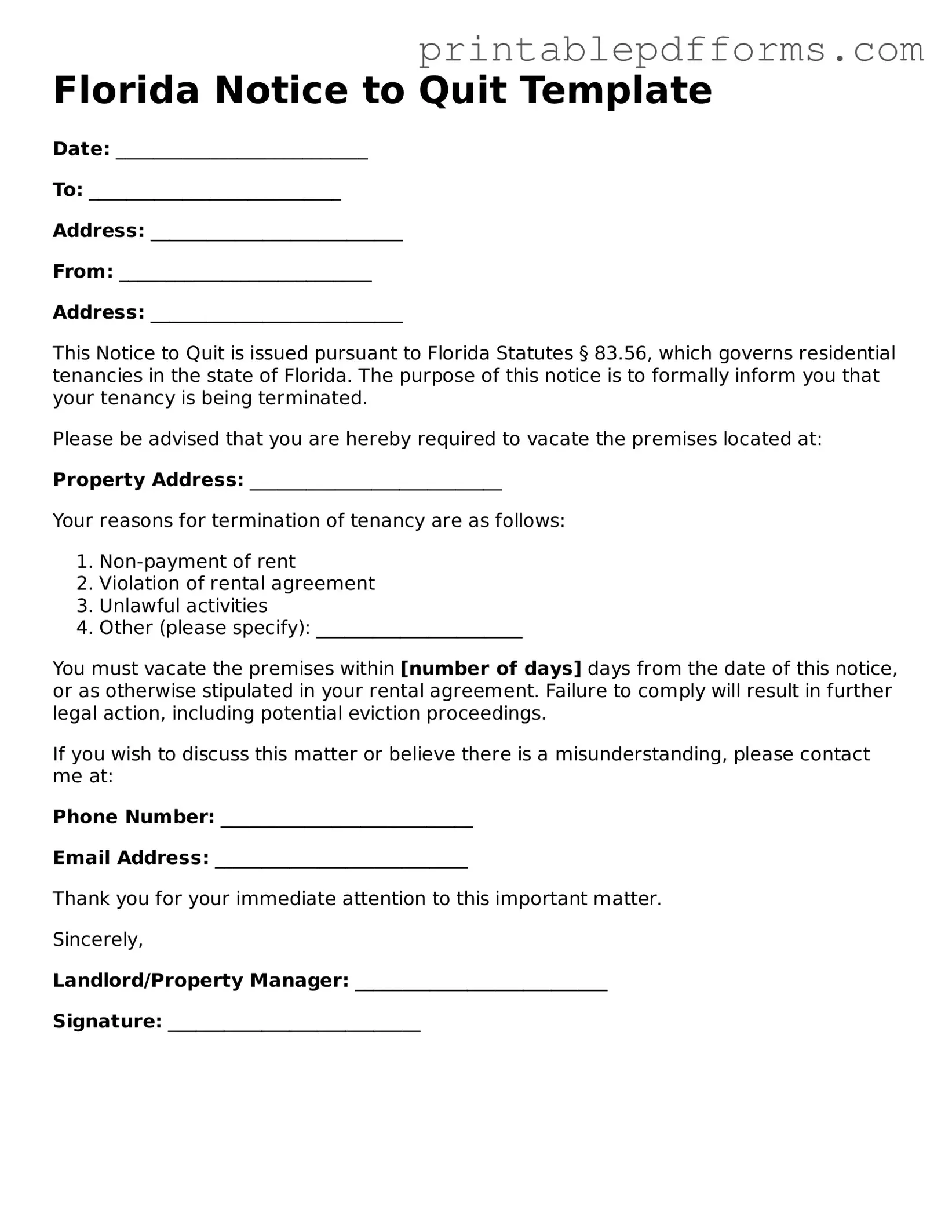Florida Notice to Quit Template
Date: ___________________________
To: ___________________________
Address: ___________________________
From: ___________________________
Address: ___________________________
This Notice to Quit is issued pursuant to Florida Statutes § 83.56, which governs residential tenancies in the state of Florida. The purpose of this notice is to formally inform you that your tenancy is being terminated.
Please be advised that you are hereby required to vacate the premises located at:
Property Address: ___________________________
Your reasons for termination of tenancy are as follows:
- Non-payment of rent
- Violation of rental agreement
- Unlawful activities
- Other (please specify): ______________________
You must vacate the premises within [number of days] days from the date of this notice, or as otherwise stipulated in your rental agreement. Failure to comply will result in further legal action, including potential eviction proceedings.
If you wish to discuss this matter or believe there is a misunderstanding, please contact me at:
Phone Number: ___________________________
Email Address: ___________________________
Thank you for your immediate attention to this important matter.
Sincerely,
Landlord/Property Manager: ___________________________
Signature: ___________________________
